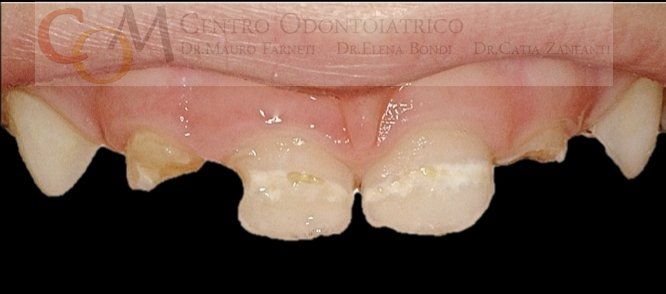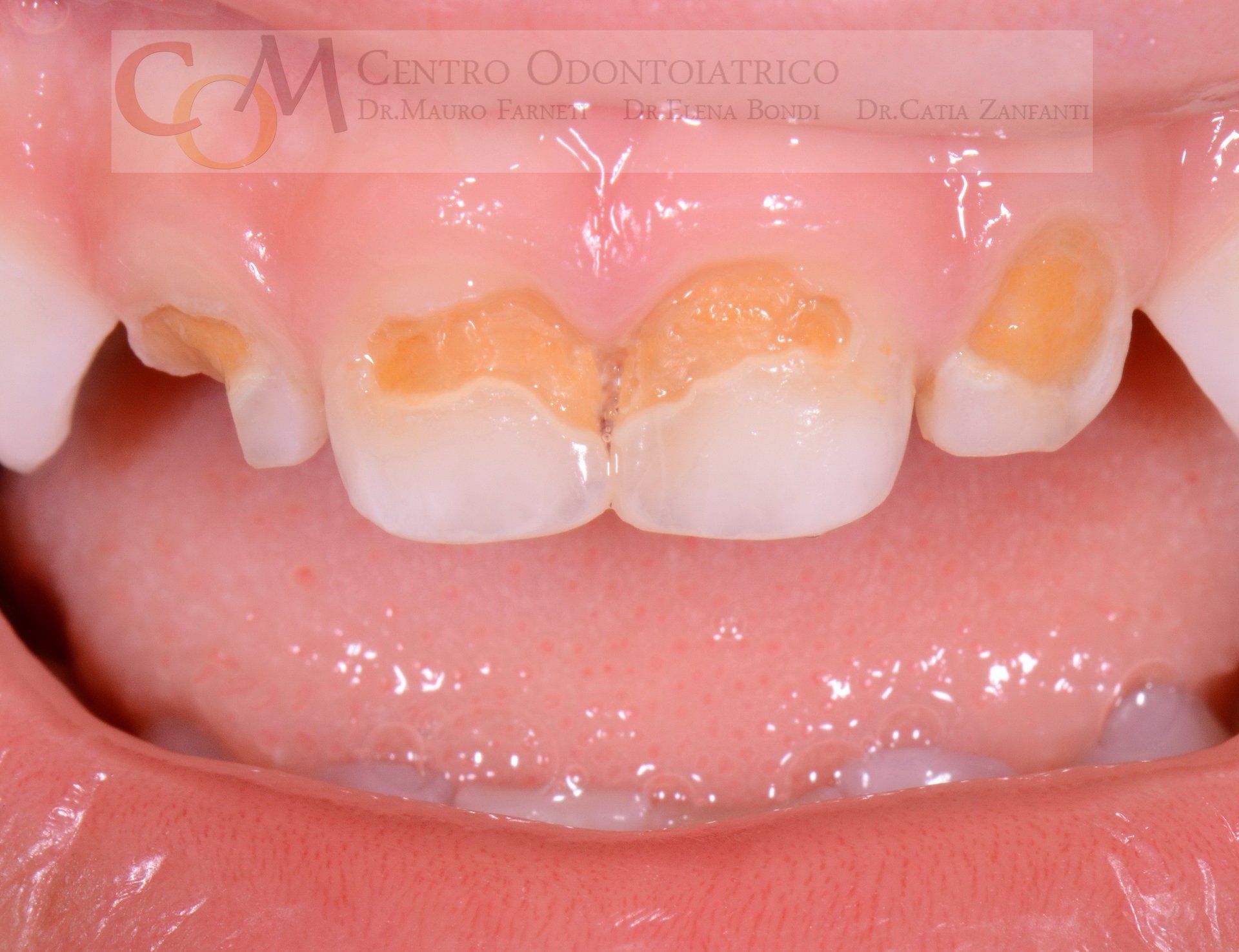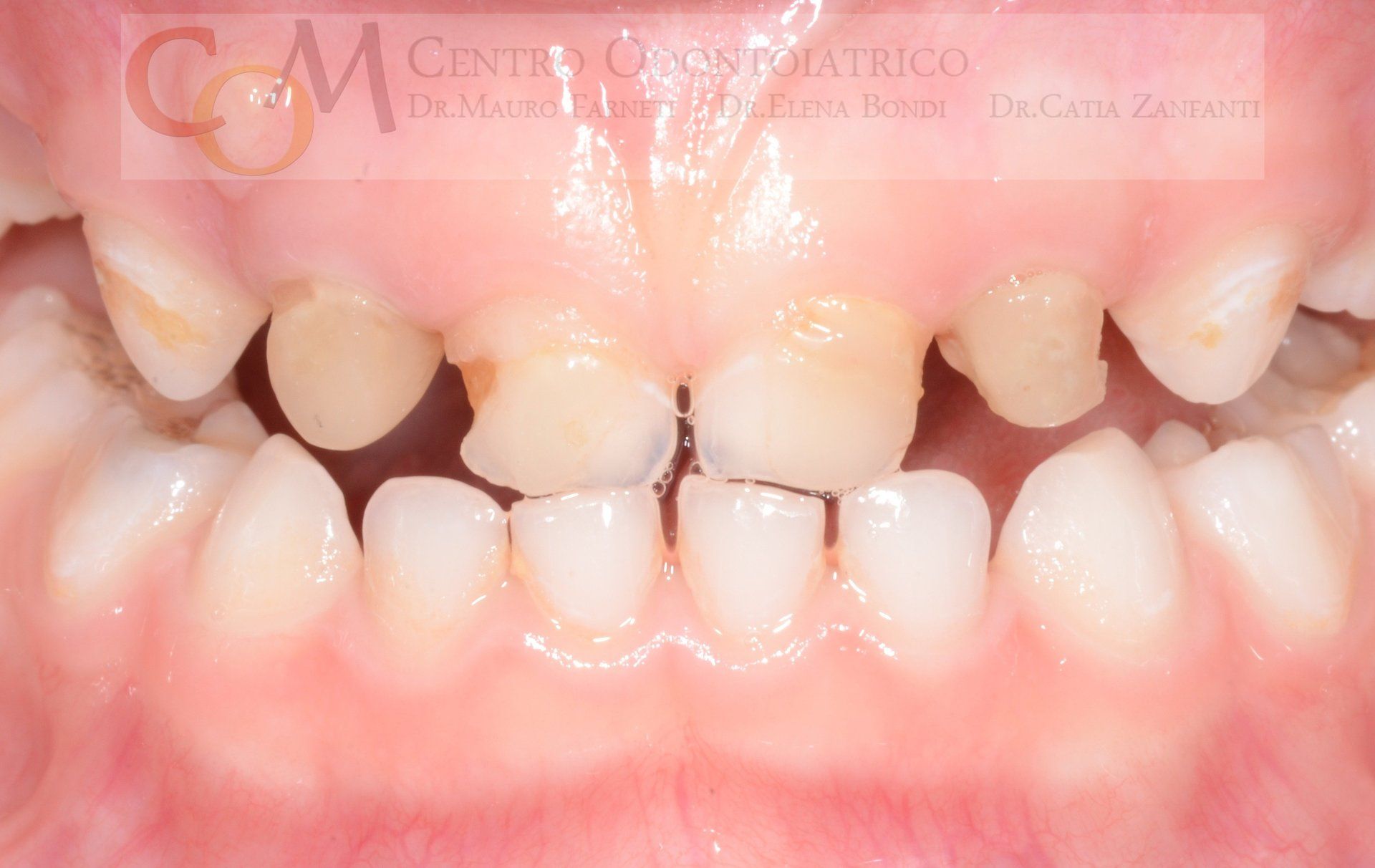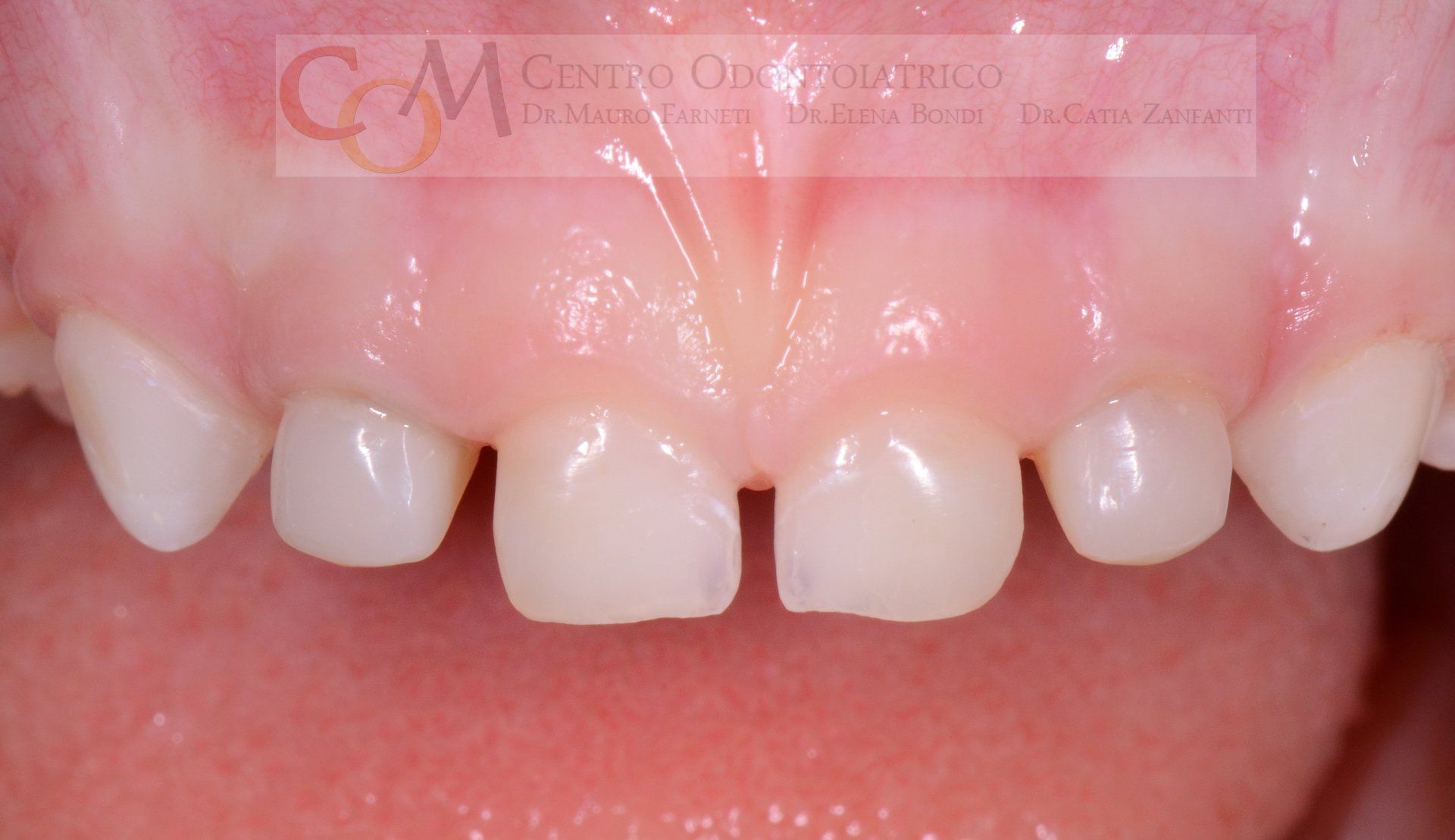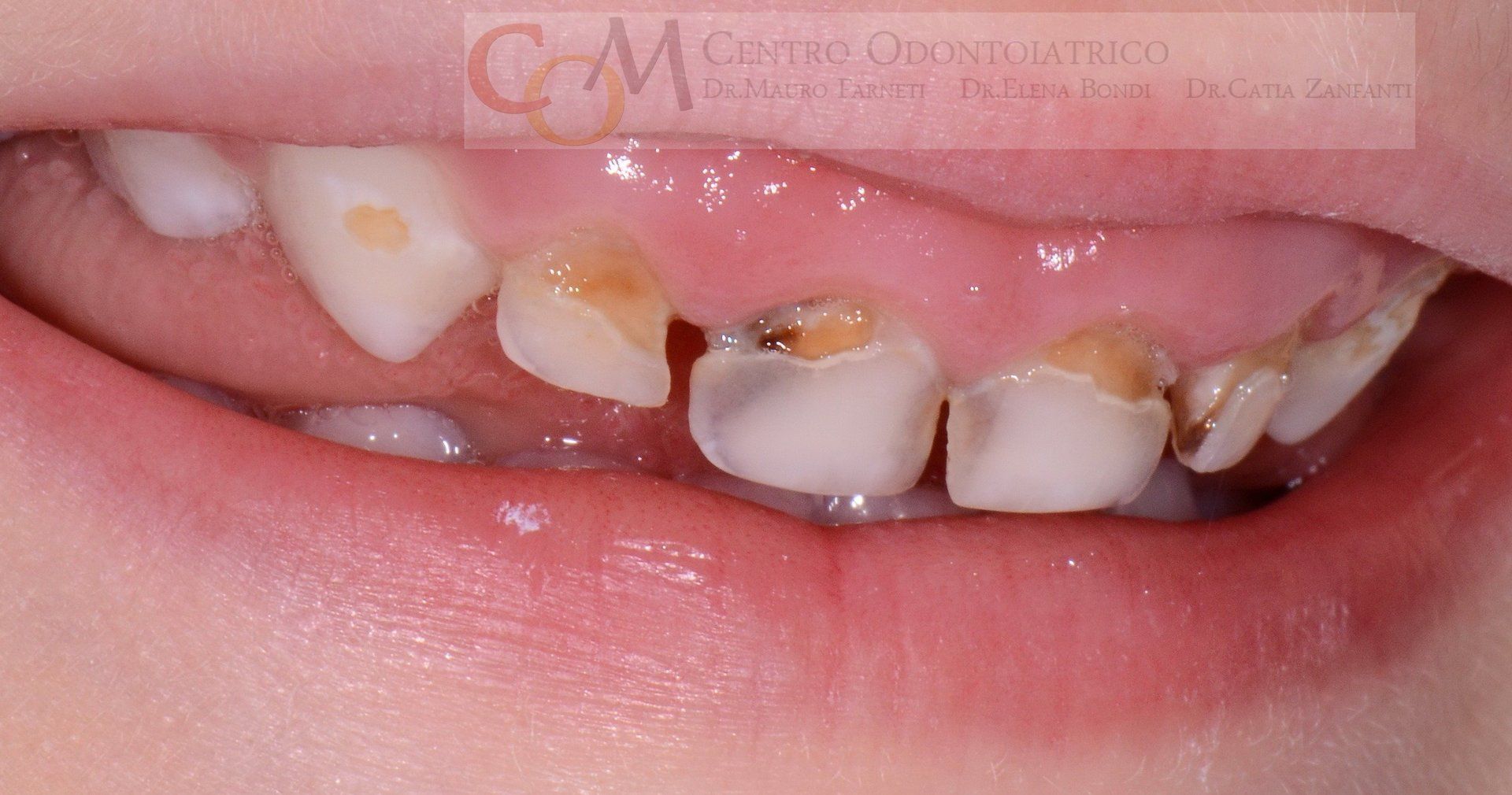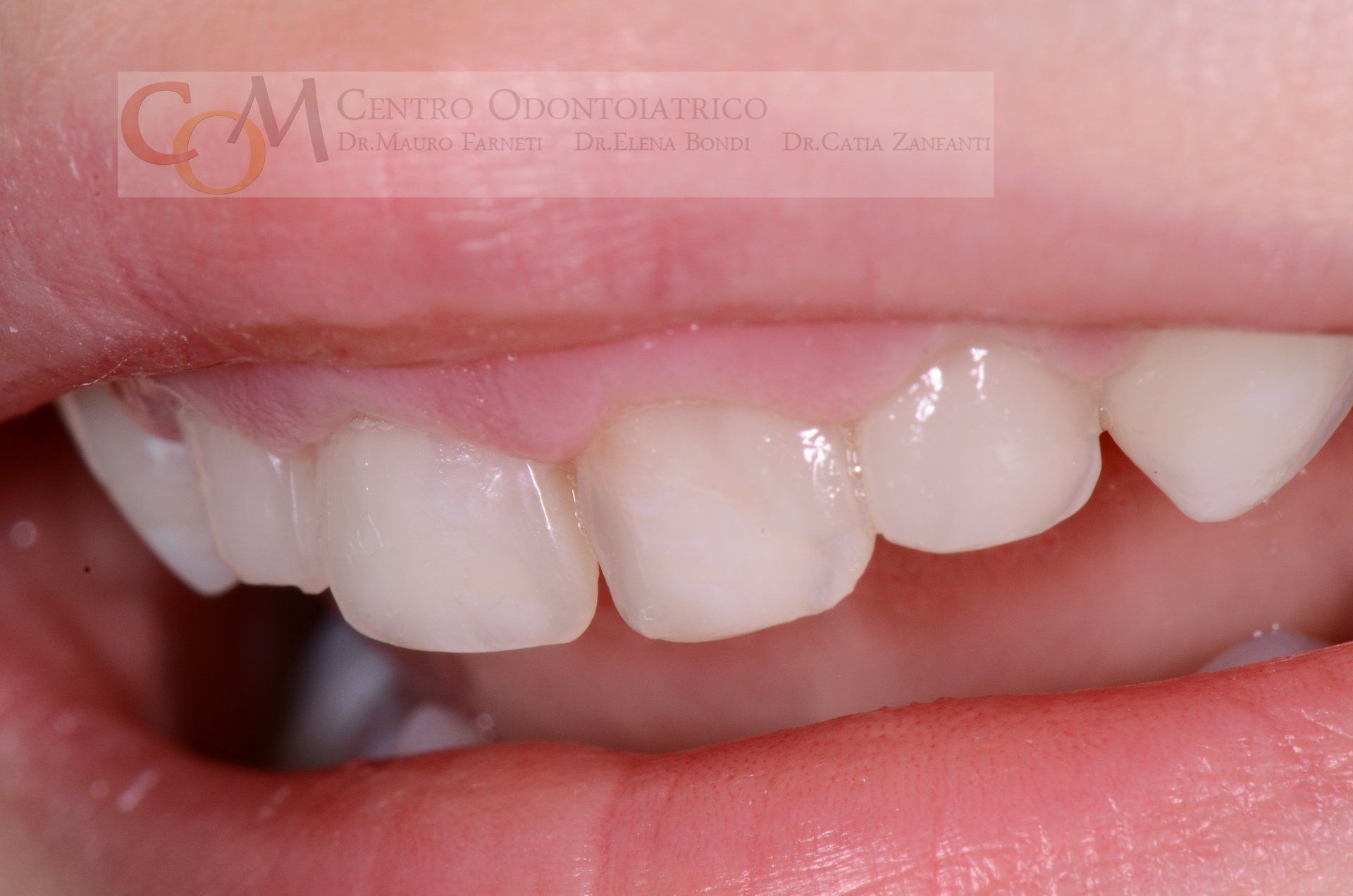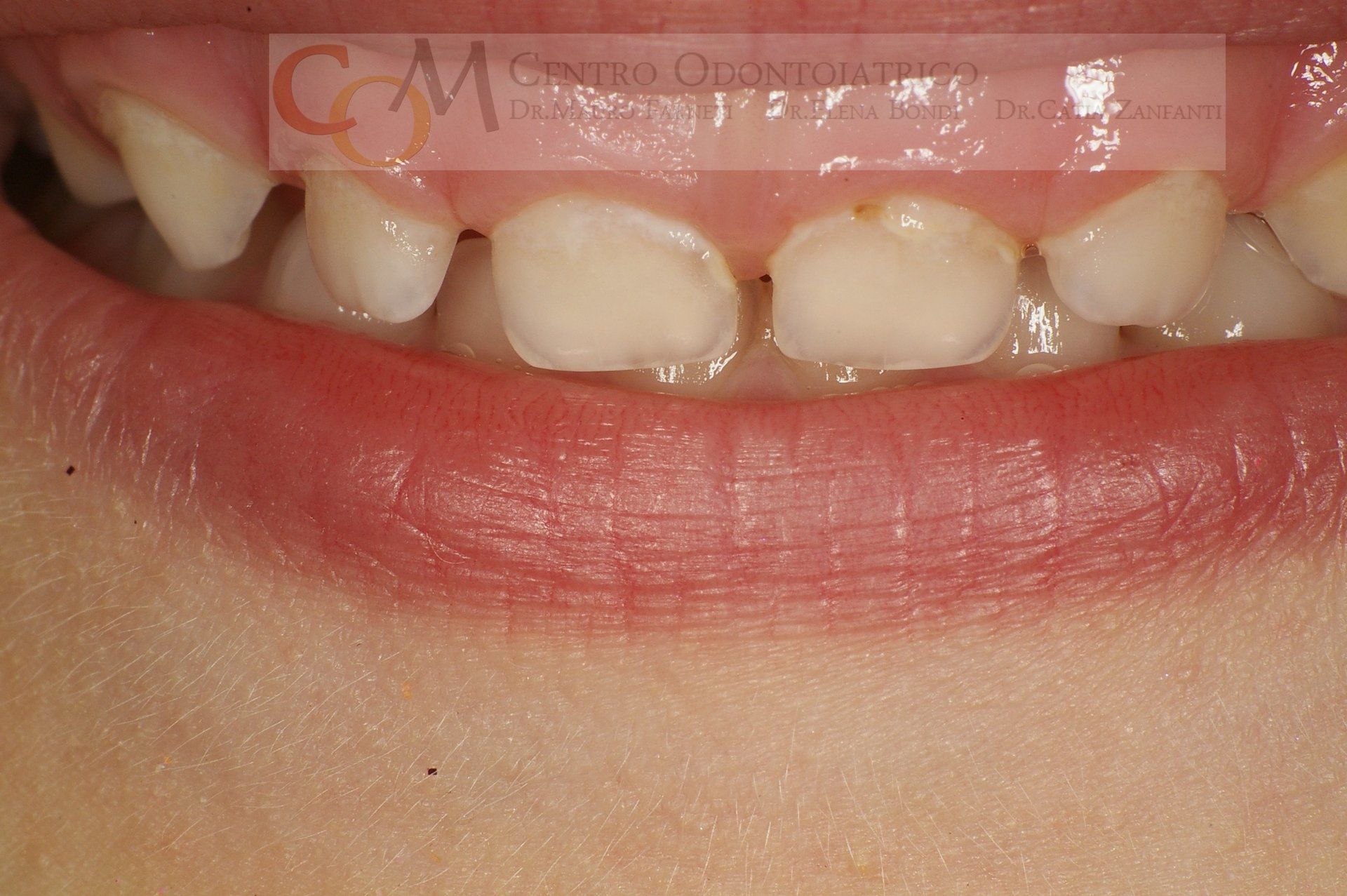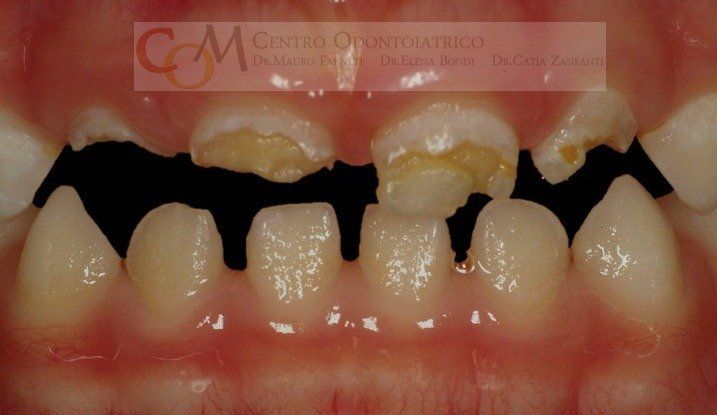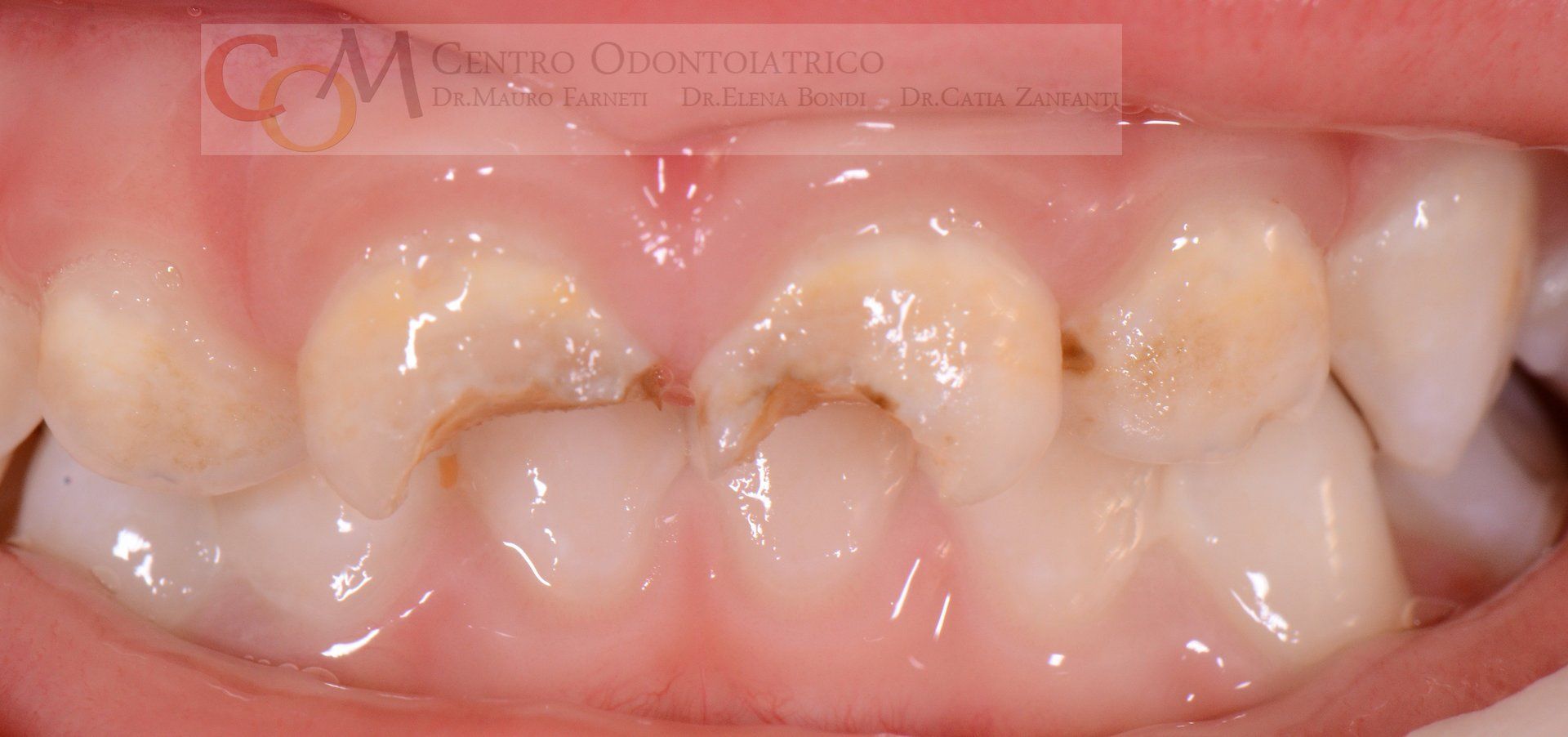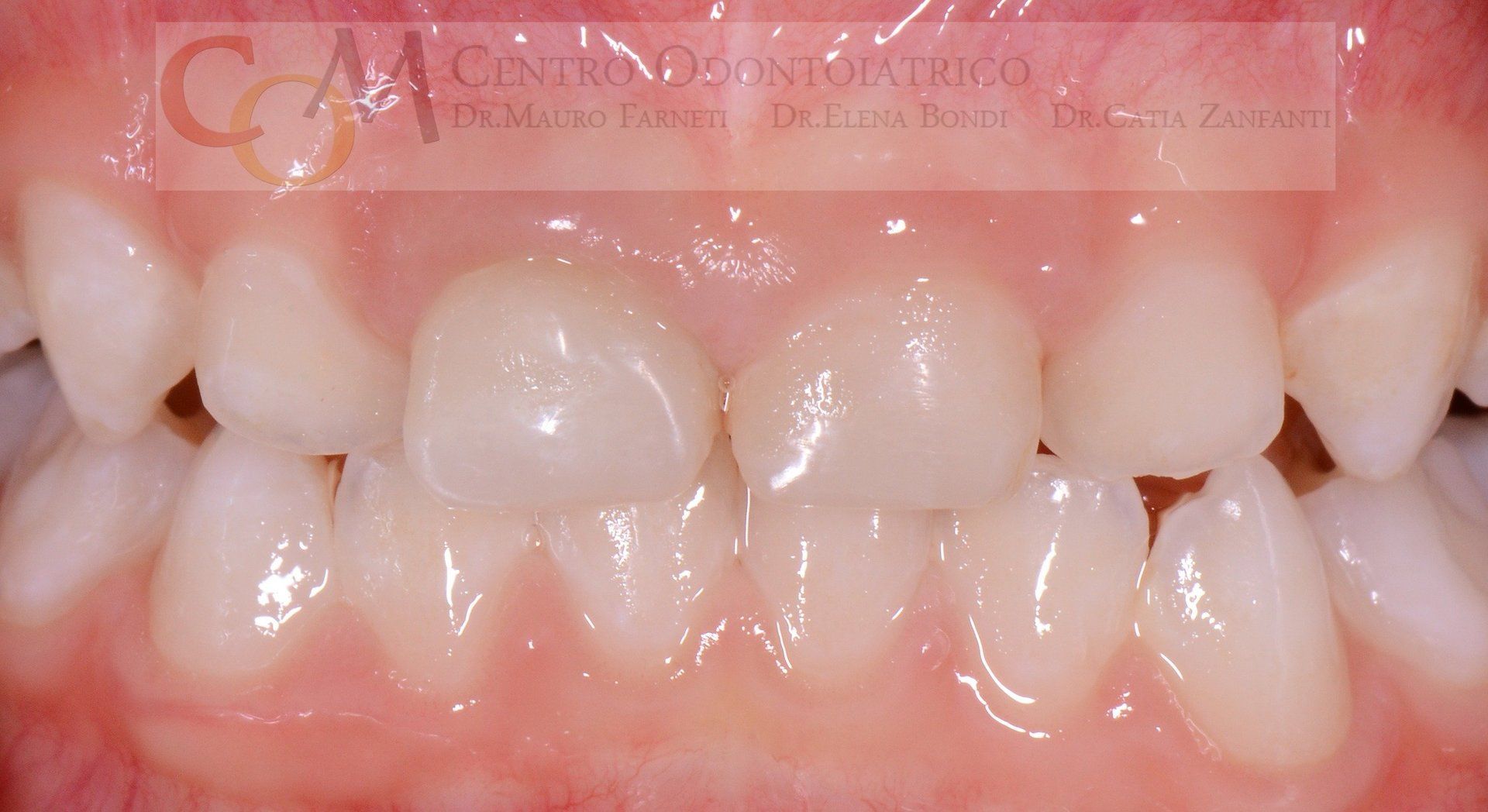CENTRO ODONTOIATRICO DR. MAURO FARNETI DOTT.SSA ELENA BONDI E CATIA ZANFANTI | 14/H, Via Abruzzo -
40139 Bologna (BO) - Italy | VAT Reg No. 02329571208
|
| info@centro-odontoiatrico.it
|
CARIES IN CHILD
Before starting to talk about this topic, I would like to show you, mothers and fathers, how it is possible to cure and restore the teeth of your children, in a definitive way ... because it is necessary to do so.
This overview of some of my young patients is also for all those who say that it is not possible to cure the teeth of a small child (because it is difficult, the child does not cooperate ...) or, even, it is useless to do it.
G had really bad teeth, especially the side ones!
But we saved everything and now G. allows himself to be photographed very willingly!
D. is only 30 months old, and comes from far away ... but has gone home happy!
L. was subjected to outpatient treatment ... the protoxide gave us a big hand: a great result, I think!
Even in S. we saved all the teeth. Now she is much happier!
Now some information….
The caries in a child is one of the main causes of a request from parents for the dentist's intervention. The pathology in the milk tooth has a particularly rapid evolution due to the lack of enamel present in the primary dentition. This means that, from the moment in which the tooth becomes ill to the point in which the pulp is involved (ie the nerve, and therefore pain appears), the time is really short.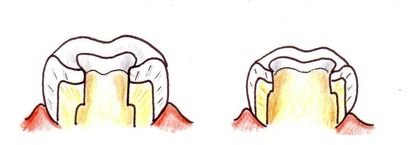
In the drawing or, in white, on the left, the enamel of a permanent tooth (adult) and the lesser amount in a milk tooth (right).
Early childhood caries means caries that affect the young child: the lesions initially appear as whitish lines near the collar of the tooth (ie the base of the tooth), and then grow and turn towards the orange color: from that moment the severity of the lesions continues quickly.
The clearest line is a first warning of the demineralization that is taking place on the tooth, and therefore the pediatric dentist must be involved as soon as possible.
Dairy teeth often start to obtain cavities as soon as they erupt in the oral cavity as they are frequently in contact with simple sugars, such as those conveyed by the bottle, or the introduction of the home oral hygiene maneuvers is delayed by the parents.
Particularly aggressive for milk teeth are: tisanes / infusions on the market in ready-made and pre-sweetened sachets; sweetened milk with any type, including honey; milk and biscuits, especially during nighttime use; daily use, frequently in place of water, of fruit juices or acidic drinks, to mention some of the most common mistakes made in trying to give a complete diet to the child, which often results in the appearance of a disease called "Bottle Syndrome".
The bottle syndrome is nothing more than the presence of multiple caries of the milk teeth, which, often, at the age of two and a half / three, are already extensively decayed both in the posterior and in the anterior ones.
It must always be remembered that the decayed milk teeth are bad, very bad, like the teeth of adults, and therefore this painful experience must be absolutely prevented. . Remember, also, that it is much easier for those who take care of children and care about their well-being, to intervene when the pain is not yet present because anyone would have a greater willingness to be approached if in a state of well-being, rather than afflicted by ache.
Furthermore, maintaining the health of milk teeth is a prerequisite for the correct maintenance of future permanent teeth. The therapies we apply are always aimed at maintaining the teeth, both for the appearance and for the important function they perform.



